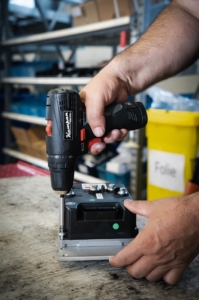When we think about technology, we often picture sleek smartphones, powerful computers, or intricate machinery. But have you ever considered the humble electronic enclosure? These unassuming boxes play a crucial role in protecting and housing electronic components, ensuring they function properly and safely. In this blog post, we’ll explore why electronic enclosures are so important, their role across various industries, and how to choose the right one for your needs.
The Significance of Proper Enclosures in Various Industries
Electronic enclosures are used in many industries, from healthcare to industrial manufacturing. In healthcare, they protect vital medical equipment from dust, moisture, and accidental damage. Imagine a life-saving heart monitor failing because it wasn’t adequately protected. In industrial settings, enclosures shield sensitive equipment from harsh environments, such as extreme temperatures and corrosive substances. Without proper protection, these components would quickly degrade, leading to costly repairs or replacements and potential safety hazards.
The telecommunications industry also relies heavily on electronic enclosures to safeguard communication devices. These enclosures prevent interference from other electronic devices and environmental factors, ensuring reliable communication. Similarly, in the automotive industry, electronic enclosures protect various control units and sensors that are critical for vehicle performance and safety.
Factors to Consider When Choosing the Right Enclosure
When selecting an electronic enclosure, several factors need to be considered. First, evaluate the environmental conditions in which the enclosure will be used. Will it be exposed to extreme temperatures, moisture, or corrosive substances? Choose an enclosure with the appropriate protection rating, such as NEMA or IP ratings, to ensure it can withstand these conditions.
Next, consider the size and layout of the enclosure. Ensure there’s enough space for all components, with room for proper ventilation and heat dissipation. Think about future expansion needs as well, so you don’t outgrow the enclosure too quickly.
Material choice is another critical factor. Common materials include plastic, aluminum, and stainless steel, each with its own advantages and drawbacks. Plastic is lightweight and corrosion-resistant but may not offer the same level of durability as metal options. When it comes to robustness and providing good heat dissipation, die cast aluminum is an excellent choice, while stainless steel offers excellent corrosion resistance and strength. Keeping these factors in mind will help you choose an enclosure that not only protects your electronic components but also makes your workflow smoother and more efficient.
Benefits of High-Quality Electronic Enclosures
Investing in high-quality electronic enclosures offers several benefits. First and foremost, they provide robust protection against environmental factors, such as dust, moisture, and temperature fluctuations. This helps extend the lifespan of electronic components, reducing the need for frequent replacements and repairs.
High-quality enclosures also enhance safety. They prevent accidental contact with live electrical parts, reducing the risk of electric shock. Additionally, they can contain and suppress fires caused by electrical faults, minimizing damage and potential injuries.
Furthermore, using top-tier enclosures can improve the overall performance of electronic systems. By maintaining optimal operating conditions, these enclosures help ensure that components function efficiently and reliably. This can lead to better productivity and reduced downtime in industrial applications.
Common Mistakes in Selecting or Using Electronic Enclosures
Choosing the wrong enclosure or using it improperly can lead to significant issues. One common mistake is selecting an enclosure that doesn’t provide adequate protection for the specific environment in which it will be used. For example, using a non-weatherproof enclosure outdoors can result in water damage to the internal components.
Another mistake is not considering the size and layout of the enclosure. Overcrowding components can lead to overheating and reduced functionality. It’s essential to ensure there’s enough space for all parts and adequate ventilation to prevent heat buildup.
Lastly, neglecting to follow the manufacturer’s installation guidelines can compromise the enclosure’s effectiveness. Proper sealing, grounding, and mounting are critical to ensuring the enclosure performs as intended.
Advancements in Electronic Enclosure Technology
The field of electronic enclosures is continually evolving, with new technologies and materials enhancing their performance and functionality. One significant advancement is the development of smart enclosures. These enclosures incorporate sensors and connectivity features to monitor environmental conditions and component performance in real-time. This allows for proactive maintenance and early detection of potential issues.
Another innovation is the use of advanced materials, such as composite plastics and nano coatings, which offer superior protection against harsh environments. These materials are lightweight yet durable, providing excellent resistance to corrosion, heat, and impact.
Modular enclosures are also gaining popularity. These enclosures can be easily customized and expanded to accommodate changing needs, making them a versatile solution for various applications.

Electronic enclosures may not be the most glamorous aspect of technology, but their importance cannot be overstated. They protect sensitive components, enhance safety, and improve the performance and reliability of electronic systems across various industries. By understanding the significance of proper enclosures and considering factors such as environmental conditions, size, and material, you can make informed decisions when selecting the right enclosure for your needs.
The future of electronic enclosures looks promising, with advancements in technology and materials offering even greater protection and functionality. Whether you’re in healthcare, manufacturing, telecommunications, or any other industry, investing in high-quality enclosures is a crucial step toward ensuring the longevity and efficiency of your electronic systems.



